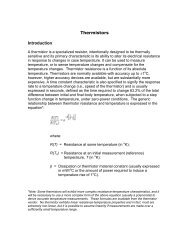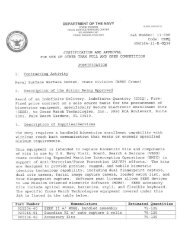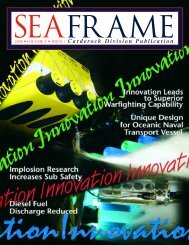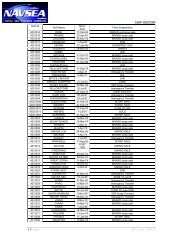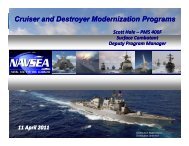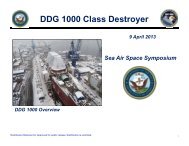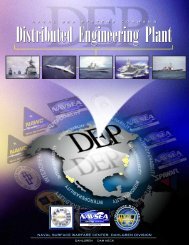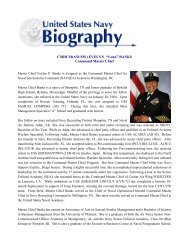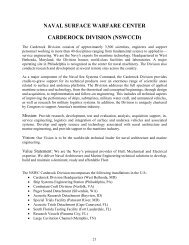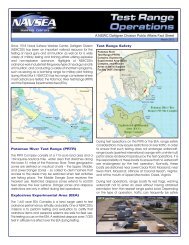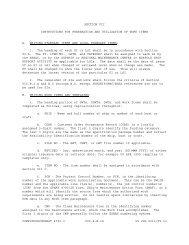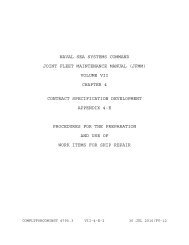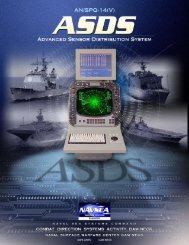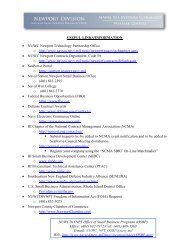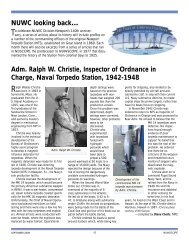Volume 6, Issue 1 - Naval Sea Systems Command - The US Navy
Volume 6, Issue 1 - Naval Sea Systems Command - The US Navy
Volume 6, Issue 1 - Naval Sea Systems Command - The US Navy
You also want an ePaper? Increase the reach of your titles
YUMPU automatically turns print PDFs into web optimized ePapers that Google loves.
SEAFRAME<br />
30<br />
Core equities<br />
Sailors assigned to the Ohio-Class fleet ballistic missile submarine <strong>US</strong>S Pennsylvania<br />
(SSBN 735) spell out the word “Fifty” as they return to <strong>Naval</strong> Base Kitsap, <strong>Navy</strong> Region<br />
Northwest . Pennsylvania has just completed its 50th Patrol at sea and a significant<br />
moment in history for the submarine.<br />
U.S. <strong>Navy</strong> photo.<br />
SIGNATURE DECOMPOSITION (Continued from page 28)<br />
been very useful in advancing, proving, and refining the<br />
technique. It will also be beneficial for future design work<br />
and research and development efforts.”<br />
Nelson Keech, a mechanical engineer, chief<br />
engineer for Carderock Division’s signature analysis<br />
efforts, and a longtime veteran of acoustic investigations,<br />
first introduced the decomposition technique during<br />
the introduction of the <strong>US</strong>S <strong>Sea</strong>wolf (SSN 21) into the<br />
fleet. “With the quieter signatures,” he says, “we had<br />
to go into a more in-depth analysis to fully quantify<br />
those signatures. <strong>The</strong> critical thing was development<br />
of high-gain [hydrophone] arrays to generate narrowwidth<br />
“spotbeams,” which basically allowed us to<br />
dissect the signature. That followed on from the <strong>Sea</strong>wolf<br />
to the Virginia Class, and now we’re using it with the<br />
SSGN.” <strong>The</strong> spotbeams were initially developed as<br />
a quality control tool, but trial personnel realized the<br />
tool could be used to focus on minor components of<br />
a signature. <strong>The</strong> Performance Assessment community<br />
eventually expanded the use of the tool to bring about<br />
the decomposition analysis.<br />
Mike Marsh, Acting Virginia Class/SSGN<br />
Program Manager, says it has been about a 10-year<br />
process to calibrate and use the beams, and develop the<br />
methods to the point where trial personnel could use the<br />
spotbeams to measure signature levels. “It used to be one<br />
big beam,” he explains, “to make one measurement of the<br />
entire submarine. We broke that down into components<br />
and eventually were able to calibrate those components by<br />
various means. Every year or so, we would do a trial, take<br />
data, learn from it, improve our processes, and do another<br />
trial. Eventually, we arrived at the current methods to do<br />
this kind of analysis.”



